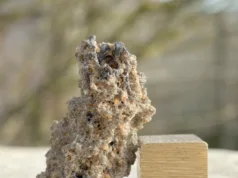Andesite is volcanic rock named after the Andes Mountains. Intermediate in silica content, it is usually gray in color and may be fine-grained or porphyritic. Andesite is the volcanic equivalent of diorite. It consists of the plagioclase feldspar minerals andesine and oligoclase, together with one or more dark, ferromagnesian minerals such as pyroxene and biotite. Amygdaloidal andesite occurs when the voids left by gas bubbles in the solidifying magma are later filled in, often with zeolite minerals. Andesite erupts from volcanoes and is commonly found interbedded with volcanic ash and tuff. Ancient andesites are used to map ancient subduction zones because andesitic volcanoes form on continental or ocean crust above these zones.
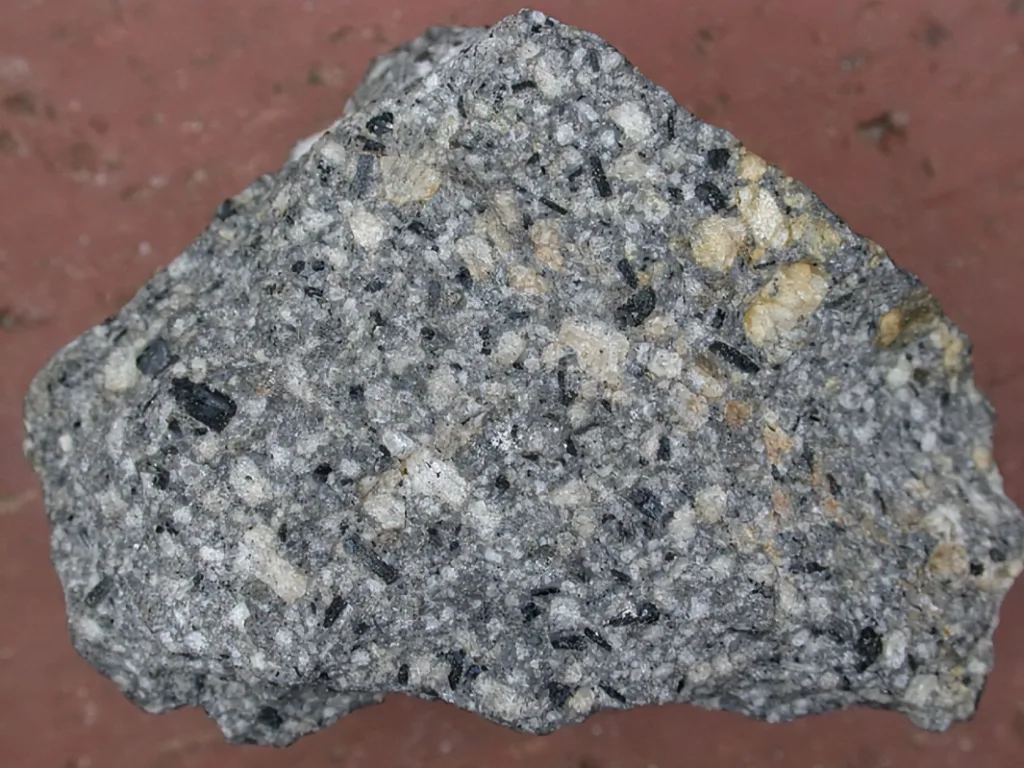
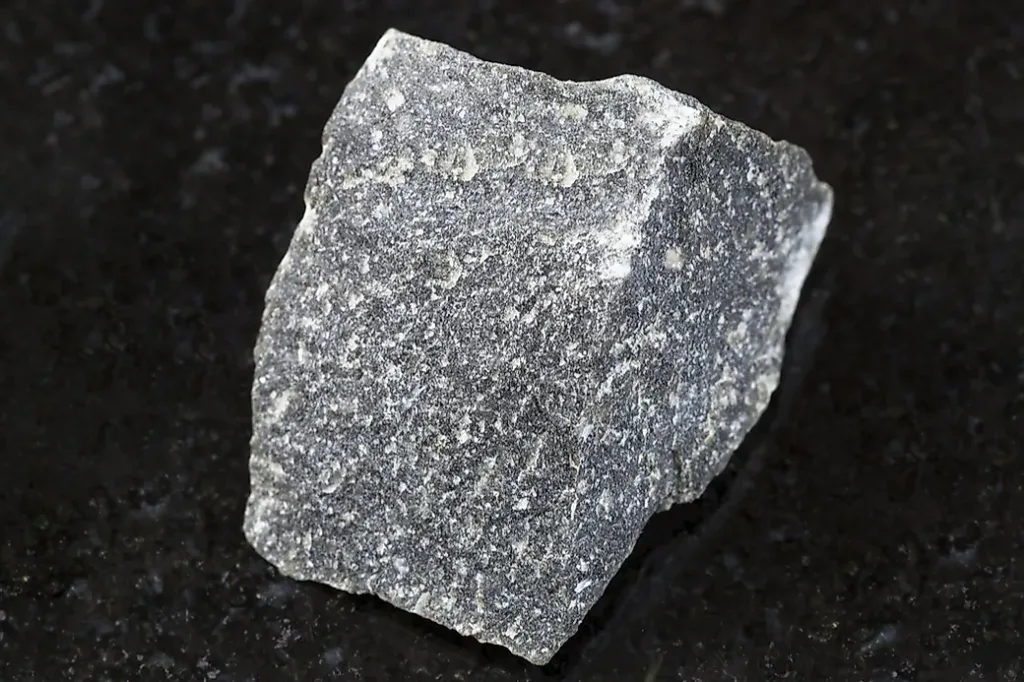
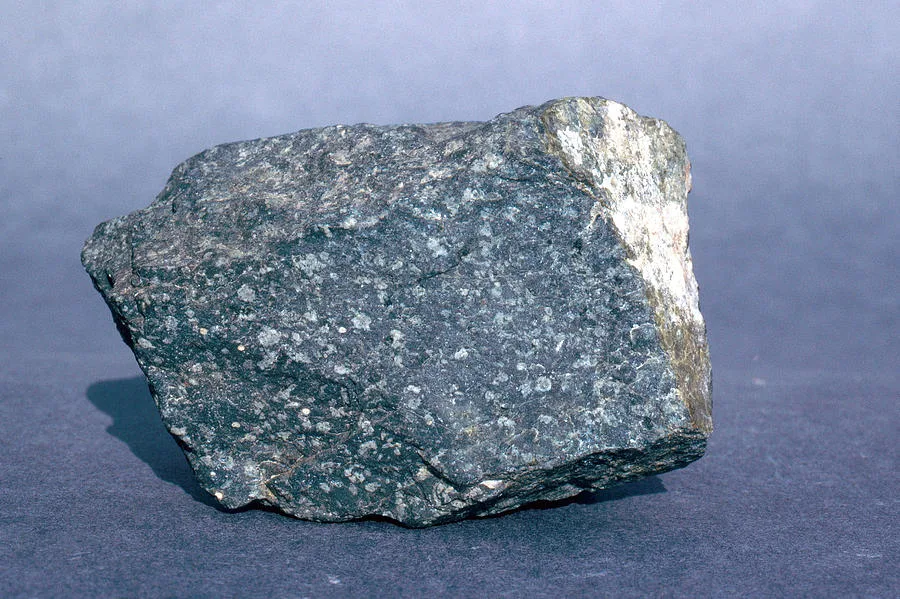
Name origin: Rock name is after Andes – the mountain chain extending along the western coast of the southern America.
Colour: Variable, but typically bluish-grey or grey (lighter coloured than basalt).
Structure: Compact
Group – volcanic.
Texture: Aphanitic to porphyric with redish phenocrysts of garnet and plagioclase.
Alterations: Plagioclases are in places transformed to clay minerals.
Major minerals of Andesite: Plagioclase, hornblende, almandine.
Accessory minerals of Andesite:Ilmenite, apatite and orthopyroxene.
Classification
According to modal composition projected within the QAPF discrimination diagram for volcanic rock (Streckeisen, 1978), the andesite project within basalt field. However, the andezit has higher SiO2 content (> 52 wt. %) compared to that in basalt with less than 52 wt. % SiO2.

Chemical Composition of Andesite

Andesite is an intermediate sub-alkalic rock with SiO2 contents ranging between 57 and 63 wt. %, and Na2O + K2O contents around 5 wt. %. Intermediate rocks are also characterized by an increased CaO content compared to that in acidic rocks. Similar CaO contents (6 – 7 wt. %) are also typical for diorite – the plutonic equivalent of andesite. The andesite from Šiatorska Bukovinka is metaluminous, medium-potassic rock with A/CNK = 0.95 and A/NK = 2.38. The Mg/(Mg + Fe2+) ratio was recalculated after the conversion of all Fe2O3 to FeO. Trace element contents in andesites with garnets are similar to those without garnets. They only show a moderate enrichment in large lithophile elements (LILE – K, Rb, Cs, Sr, Ba), negative Nb anomaly and positive Pb anomaly pronounced in normalized records of trace elements. Such trends are typical for the magmas originating in subduction zones. Contents of rare earth elements La-Eu in garnet-bearing andesites are similar to those in garnet-free andesites. However, the garnet-bearing andesites are little depleted in heavy rare earth elements compared to the garnet-free andesites what probably reflects the garnet fractionation (Harangi et al., 2001).
Formation of Andesite
Andesite generally occurs in convergent plate cages. Contains some processes in its formation.
- Fractional crystallization of a mafic parent magma.
- Partial melting of crustal material.
- Magma mixing between the magmas in a magma reservoir
For the formation of andesite, a basaltic magma must then crystallize certain minerals removed from the melt. The first minerals that crystallize and emerge from a basaltic base material are olivine and amphiboles. These mafic minerals are separated from the magma and form mafic cumulates. Once these mafic minerals have been removed, the melt has no residual basaltic composition. The silica content of the melt is now enriched with respect to the starting composition. As this process continues, the melt gradually develops and eventually becomes andesitic.
In the mantle wedge section, the molten basalt moves upwards until it reaches the base of the dominant shell. Once there, the basaltic melt can underline in its shell, there may be a layer of molten material, or it may go into the top plate in the form of dams. Together, the basalt melts the material of the pelitic upper crust. It is the result of melting in the crust of island arches and andesitic magmas.
In the continental springs such as the Andes, magma is pooled in the shallow shell and forms magma chambers. As cristalization continues and the system loses heat, these reservoirs cool down in time. In order to remain active, magma chambers should have continued to reload the hot basaltic solution into the system. When this basaltic material is mixed with advanced riolitic magma, the composition is returned to the intermediate phase andesite.
Distribution
Andesite is a type of volcanic rock that is commonly found in association with volcanic activity, particularly in subduction zone environments. Here are some of the locations where andesite can be found:
- The Andes Mountains (South America): Andesite is named after the Andes Mountains, which run along the western edge of South America. This region is a prime example of a volcanic arc formed by the subduction of the Nazca Plate beneath the South American Plate. Andesitic volcanoes are abundant in the Andes, and they erupt andesitic lava flows and volcanic ash.
- Cascade Range (North America): The Cascade Range in the western United States, including states like Washington, Oregon, and northern California, is another well-known location for andesitic volcanism. These volcanoes are part of the Pacific Ring of Fire, and they erupt andesitic and dacitic lavas.
- Java and Indonesia: Indonesia, particularly the island of Java, has numerous andesitic volcanoes due to its location along the Pacific Ring of Fire. The explosive eruption of these volcanoes can pose significant hazards to nearby populations.
- Japan: Japan, like Indonesia, is part of the Pacific Ring of Fire and has several andesitic volcanoes. Mount Fuji, for example, is a well-known andesitic volcano in Japan.
- Central America: Countries in Central America, such as Guatemala, Nicaragua, and Costa Rica, have andesitic volcanoes along their volcanic arcs. The subduction of the Cocos Plate beneath the Caribbean Plate creates the conditions for andesitic magma formation and eruptions in this region.
- New Zealand: Both the North Island and South Island of New Zealand have andesitic volcanoes. The Taupo Volcanic Zone on the North Island is particularly active and features numerous andesitic eruptions.
- The Philippines: The Philippines, located in the western Pacific Ocean, has several andesitic volcanoes due to its location within the Ring of Fire. Mount Mayon, in the Bicol Region of the Philippines, is a famous andesitic volcano.
These are just a few examples of regions where andesite is commonly found. Andesitic volcanoes are associated with convergent plate boundaries, where one tectonic plate is subducting beneath another, leading to the generation of andesitic magma through partial melting of the subducting oceanic crust and overlying mantle.
Characteristics and Properties of Andesite Rock
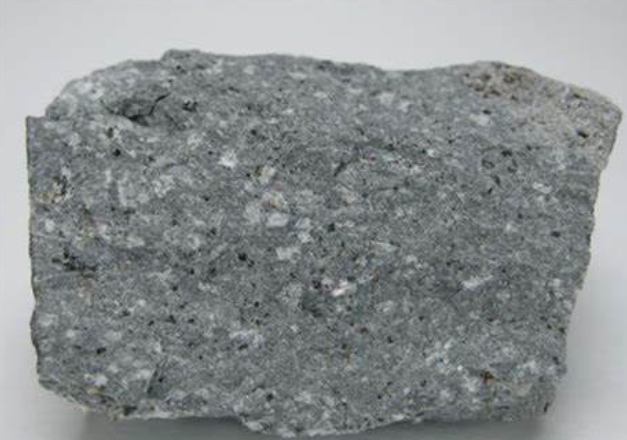
- Andesite, together with pyroxene, consists of plagioclase feldspar. In addition, it may contain hornblende.
- The minerals that this rock can contain are apatite, garbet, ilmenite, biotite, magnetite, zircon. It may also contain trace amounts of alkali feldspar.
- Silica content is moderate. In other words, this mineral is neither rich nor deficient. The silica content is 50-65%.
- The density of such rocks is 2.11 – 2.36 g / cm3.
- It has a porphyritic structure. The term ‘porphyric’ refers to the incorporation of large crystals into a fine-grained rock.
- The specific gravity of this rock is 2,5 – 2,8.
- It usually occurs in shades of gray. However, it is lighter in color than basalt.
- It is said that thicker or dome-shaped structures are formed.
- The hardness of andesite rocks on the Moh scale is 7.
Andesite Application and Uses Areas

Andesite, as an igneous rock, has several applications and uses in various industries and areas. Its properties, including hardness, durability, and ability to hold a polish, make it valuable for several purposes. Here are some of the primary application areas and uses of andesite:
- Construction Materials:
- Andesite is used as a construction material for both interior and exterior applications due to its durability and resistance to weathering. It is often used as dimension stone for building facades, walls, and flooring.
- Pavement and Road Construction:
- Crushed andesite is used as an aggregate in the construction of roads, highways, and pavements. Its hardness and wear resistance make it an excellent choice for road base and surface material.
- Monuments and Sculptures:
- Because of its ability to hold a polish and its attractive appearance, andesite is sometimes used for monuments, statues, and sculptures. It can be carved into intricate designs and maintains its appearance over time.
- Countertops and Tiles:
- Andesite is utilized in the production of countertops, tiles, and other decorative surfaces for kitchens and bathrooms. Its hardness and resistance to staining and scratching make it a popular choice.
- Cemetery Markers:
- Due to its durability and resistance to weathering, andesite is used for cemetery markers, headstones, and memorial plaques.
- Gravestones and Grave Markers:
- The ability of andesite to hold inscriptions and engravings makes it suitable for gravestones and grave markers.
- Water Features:
- Andesite is sometimes used in the construction of fountains, water features, and decorative garden elements due to its aesthetics and resistance to water erosion.
- Decorative Landscaping:
- In landscaping, andesite can be used for decorative purposes such as garden pathways, retaining walls, and rock gardens.
- Fireplace Surrounds:
- Andesite can be used for fireplace surrounds and mantels due to its heat resistance and appearance.
- Aquariums and Terrariums:
- Its ability to withstand moisture and its attractive appearance make andesite a suitable choice for the construction of aquariums and terrariums.
- Scientific Research:
- Andesite is used in scientific research and education as a representative rock for studying the properties and behavior of volcanic rocks.
- Jewelry:
It’s important to note that the specific uses of andesite may vary depending on its quality, appearance, and availability in a particular region. Additionally, the suitability of andesite for a particular application may be influenced by factors such as local geological conditions and the intended purpose of the material.
References
- Bonewitz, R. (2012). Rocks and minerals. 2nd ed. London: DK Publishing.
- Harangi, S. (2001). Neogene to Quaternary volcanism of the Carpathian-Pannonian region; a review. Acta Geologica Hungarica, 44(2), 223-258.
- Atlas-hornin.sk. (2019). Atlas of magmatic rocks. [online] Available at: http://www.atlas-hornin.sk/en/home [Accessed 13 Mar. 2019].




























